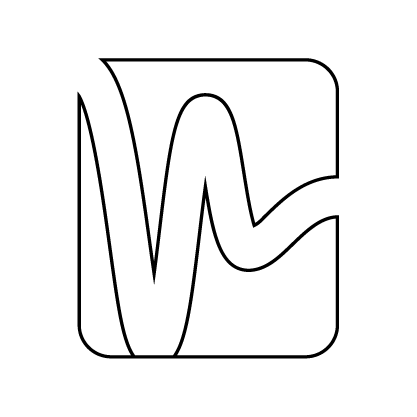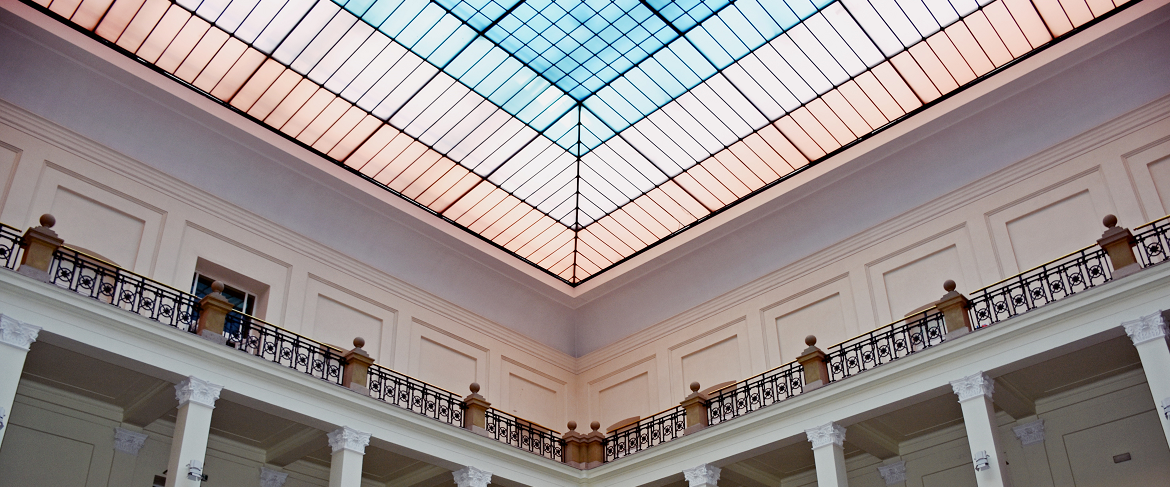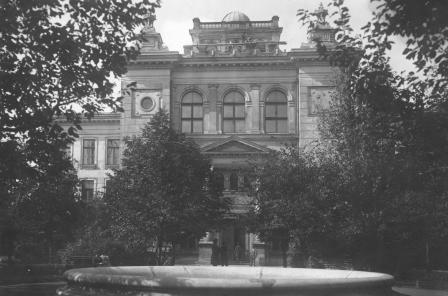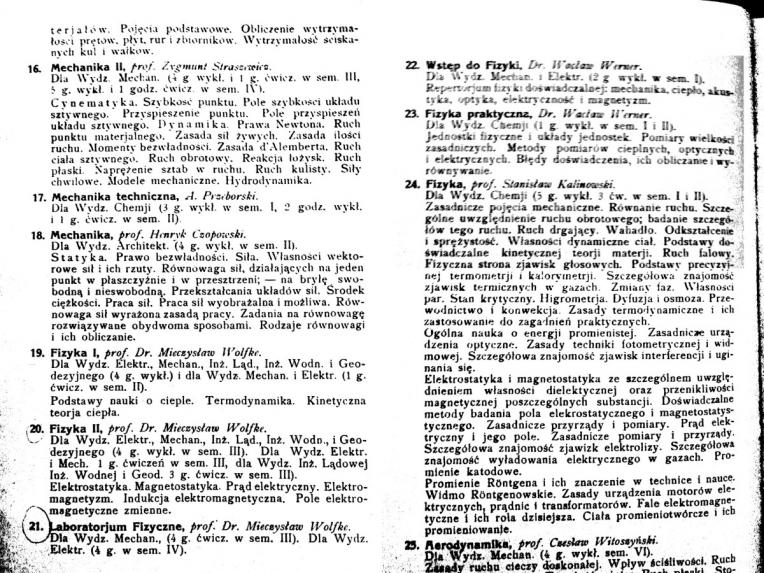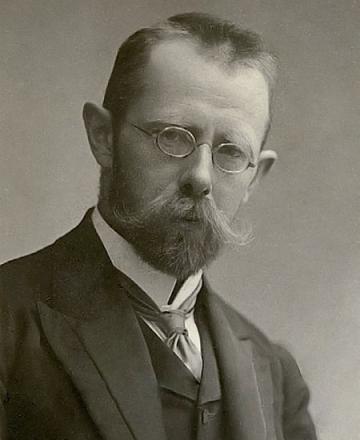Physics at the Warsaw University of Technology (1915-1939)
The next chapter of history begins in 1915, when, as a result of the activities of Polish organizations, a higher technical school was established on the basis of the Polytechnic Institute - the Warsaw University of Technology. It was a fully Polish university - with Polish as the language of instruction and Polish research and teaching staff, mostly engineers and scientists who came back from abroad.
On September 18, 1918, Rector J. Zawidzki in the inaugural lecture, referring to students who began their studies after the end of the war, said, among others:
...this strong will to acquire expertise will prompt you to quickly fill gaps and gaps in school education, especially in the fields of mathematics and physics. For mathematics and physics, together with mechanics and chemistry, are nowadays indispensable thinking tools of every technician. Without thorough knowledge of these basic sciences, without proper mastery of their basics, one cannot become a technician, one cannot become a creative engineer who would grow up to the tasks of a new vocation, who would build domestic industry, create national goods and wealth.
The first physics professor appointed to the Warsaw University of Technology was Józef Wierusz-Kowalski, a world-renowned physicist, who obtained his doctorate at the University of Göttingen, worked with Kundt in Berlin, Roentgen and Weber in Zurich. He was also a professor and rector of the Swiss University in Friborg, where his assistant was the future president of the Republic of Poland - Ignacy Mościcki. Professor Wierusz-Kowalski, who was also a professor at the University of Warsaw, organized, in cooperation with Dr. Marian Grotowski, a physics laboratory at the Warsaw University of Technology. University students also used it. Lectures on "Practical Physics" for older years were given by Dr. Wacław Werner.
The role played by physics in the course of studies at the Polytechnic is best evidenced by the statement by professor Leon Staniewicz in the "Memorial Book" published for the tenth anniversary of the Warsaw University of Technology:
In the modern development of technology, an ever closer relationship between technical sciences and physics can be seen. Large foreign factories have an entire staff of physicists and great physics laboratories, either for the purpose of testing the properties of raw materials or for scientific research in areas that are to serve as the basis for new technical applications. Many areas of modern technology are nothing more than applied physics, so of all auxiliary subjects at polytechnic universities, physics must be included among the most basic. It must provide a thorough and deep theoretical basis for further technical studies and, at the same time, at the same time make the student accustomed to precise experimental work. In this spirit, studies have now been organized at the Department of Physics at the Faculty of Electrical Engineering and the Physical Department I connected to it. Students receive theoretical training through lectures, seminars and colloquiums, and they practice experimental work by doing their own homework in a student studio. In line with the modern curriculum, the level of homework is increased, and after each assignment, the student has a short seminar with the assistant. In addition, more talented students can work in a research laboratory, helping assistants in their scientific work and thus preparing for a possible later doctoral dissertation.
The total physics curriculum included the following lectures and exercises:
- Introduction to physics - it was taught during the first semester as a high school physics repetition and preparation of students for practical exercises;
- Physics I - taught in the second semester covered the basics of the theory of heat, thermodynamics and the kinetic theory of heat. This lecture was intended to prepare students for the study of technical thermodynamics.
- Physics II - taught in the third semester, included the theory of magnetism and electricity, including vector calculus, as the basis for studying electrical sciences;
- Practical exercises - to which the students took part in the third and fourth semester.
In addition to teaching at the Department of Physics I, scientific work was carried out (by the professor and assistants) and doctoral work was started, related to the research of the then head of the Department on the dielectric constant and the theory of dielectrics.
With the development of the Polytechnic and the reform and stabilization of the newly organized universities in 1919, changes were introduced in the organization of physics at the Polytechnic. The physical units at the polytechnic and university were separated after Professor Wierusz-Kowalski left the diplomatic service. The Department of Physics I is established at the Faculty of Electrical Engineering (later Electrical), and then the Department of Physics II at the Faculty of Chemistry. This is how the plants are described in the WUT's jubilee book:
The Physics Department I occupies half of the physics and electrical engineering building and is located on the ground floor and two floors. On the first floor there is a large physical amphitheater auditorium with a capacity of 300 people. The auditorium has an electric shading system for windows, projection devices, a projection galvanometer and a quadrant electrometer, a current converter for various voltages and a supply of various direct and alternating currents. Next to the auditorium there is a large preparation room, a collection room for demonstration instruments, the offices of the professor and assistant professor and a waiting room. The second floor is completely occupied by the student studio, consisting of two large rooms, rooms for assistants and preparation rooms, and several smaller rooms, including three rooms for optical work. The laboratory has about 80 tasks from various departments of physics, it can accommodate about 150 students at the same time. On the ground floor there is the professor's research studio with a darkroom and two laboratories for assistants and doctoral students. In addition, on the ground floor there is a mechanical plant, a glass workshop and a handy warehouse. In the basement there is a laboratory for special examinations, a carpentry workshop and several storage rooms. The more expensive instruments owned by the Department include: large, concave, original Rowland mesh, Perrot-Fabry interferometer, Michelson mesh, rhodiomicrometer, piezoelectric quartz, radium preparation, Nemetz balance, comparator, large 15-plate electrostatic machine, two large Dubois electromagnets and Rumkorf, a 5,000 volt DC converter, a high voltage battery pack up to 1,000 volts. High-capacity battery banks up to 72 volts, modern vacuum devices as well as a number of precise measuring instruments.
The staff of the Department consists, apart from the head, of one assistant professor, two senior assistants, 6 junior assistants, a mechanic and two janitors.
The Physical Department II belonging to the Faculty of Chemistry was primarily responsible for organizing independent research and diploma theses. An installation for examining the sources of errors in the measurement of an elementary cartridge and an installation for examining the phenomenon of double refraction in an electric field as well as a spectrographic, spectrometric and polarimetric installation were arranged.
The following instruments are also worth mentioning: precise volt-ammeter, marked with PTR, turbine and electrolytic interrupter, electrostatic machine, arc lamp, battery bank up to 400 volts, mercury barometer, quartz spectrograph, spectrometer for direct reading of wavelengths, monochromator, spectrograph with test grid film, precision polarimeter, capillary electrometer, precision galvanometer.
In 1921, professor Stanisław Kalinowski (Fig. 12) became the head of the department, who held this position until the outbreak of World War II. Professor Kalinowski was a pioneer in the study of terrestrial magnetism, the founder of the magnetic research center in Świder near Warsaw, the author of physics textbooks and an activist of the Polish Teachers' Union. He was undoubtedly a significant Person of the interwar period.


